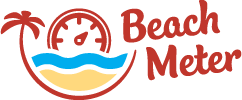Guest post by Sabid Chowdhury
What makes a great Surfing Spot?
Every non-surfer might consider it’s absurd how surfers group unitedly struggling for the same waves despite having the whole coastline to pick from. With apparently endless distances of crashing waves, why do surfers want to sit within such vicinity? The sad truth is that the best beaches for surfing are not created equal.
Beaches located only a stone’s throw apart can have an immense variation in wave intensity and surfing quality because of different sea bed qualities and the direction the beaches are facing.
The difference between Whitewater and Green Waves
In surfing terminology, we distinguish between whitewater and green waves.
- Whitewater
- Green wave
The whitewater refers to the foamy water racing towards the beach after the wave has already broken. This is the place for beginners to learn basic surfing in a safe setting. The whitewater allows you to easily catch momentum with the surfboard and practice your balance and “pop-up” – the process of going from laying to standing on the surfboard.
Green water waves refer to unbroken waves. These waves require more practice, understanding of correct positioning in the water, and well-timed pop-ups. While more difficult to catch, the green waves give more playroom for twists, turns, and enhanced speed.
Different types of Surf Breaks
The features of a given surf location define whether a surf spot has a beach break, a point break or a reef break.
Beach Breaks
A beach break is characterised by waves breaking near the beach. Usually the waves are created from sand bars and shallowing waters that put pressure on the incoming body of water, making it rise up and eventually break. The advantages of beach breaks are that they are usually easily accessible from the beach and the whitewater waves offer good conditions for beginners. However, beach breaks are less reliable as the sea floor changes over time and the waves can sometime break very abruptly, making it harder to catch the green waves.
Point Breaks
Point breaks are the least common among the three mentioned surf breaks. It’s all about the angles as the swell direction is not perpendicular to the shore line, but rather along it. This makes the waves roll and maintain their energy for much longer than regular beach breaks. Point breaks often create reliable waves and attract lots of skilled surfers.
Reef Breaks
Reef breaks are created by reefs under the water and can be far from the actual shore, often making them accessible only by boat or after a long paddle. Reef breaks can be stunning to surf, but they can also be dangerous because of the hard and often sharp coral rocks. Surfers have to be aware of the tide and wave size to avoid rough injuries.
Best Beaches for Surfing
Here is our list of four absolute top beaches for surfing:
Kuta Beach, Bali, Indonesia
Pavones, Costa Rica
Hossegor, France
Fistral Beach, England
Kuta Beach, Bali, Indonesia
Kuta Beach is a beach break placed on the western surface of the thin neck of the island. Kuta is considered the most famous beach area in Bali. Kuta Beach is just moments away from the international airport of Ngurah Rai.
Being once a quiet and simple fishing center, Kuta Beach has developed over the last 30 years into a buzzing melting pot of local and foreign tourists, bars, restaurants, shops, and hotels.
Still, Kuta Beach still manages to captivate thousands of guests all year due to its beauty. During the high season from July to August, Winter and New Year festivals, Kuta Beach is loaded with tourists, who are looking forward to a fun and affordable vacation in Bali. If you want to surf in Kuta, expect to share the waves with the crowd. Head to Uluwatu, Medewi, and Keramas for less crowds, although Bali will always have a good number of surfers chasing waves.
Pavones, Costa Rica
Surfers going to Pavones pray for a southwest swell for perfect surfing situations. If the swells are kicking in, Pavones is one of the greatest surf spots in the country. Pavones offers a fantastic left-hand wave that surfers can ride for almost 3 minutes. After a long ride like this, you may have traveled more than one kilometer. Pavones is arguably one of the greatest surfing spots on the planet.
Take a look at the beautiful point break of Pavones in this video:
Hossegor, France
Considered among the best beach breaks in the world, Hossegor is a playground for experienced surfers. You will catch a good wave here whichever period of the year you arrive in. Still, there is great variety according to the season.
In July and August, the swells are small and pleasant, but the best ways right off the beach will still be occupied with surfers. September and October is arguably the best time to go for surfing here.
At times Hossegor has strong currents and lots of wind, so check your local surf report before heading out.
Fistral Beach, England
Fistral Beach on the north coast of Cornwall is a UK favourite, and a lot of the British surfers you will encounter around the world will call this spot their home.
Fistral Beach hosts a range of international and national surfing contests, and for a beach break, Fistral is surprisingly reliable in producing excellent waves.
![]()




